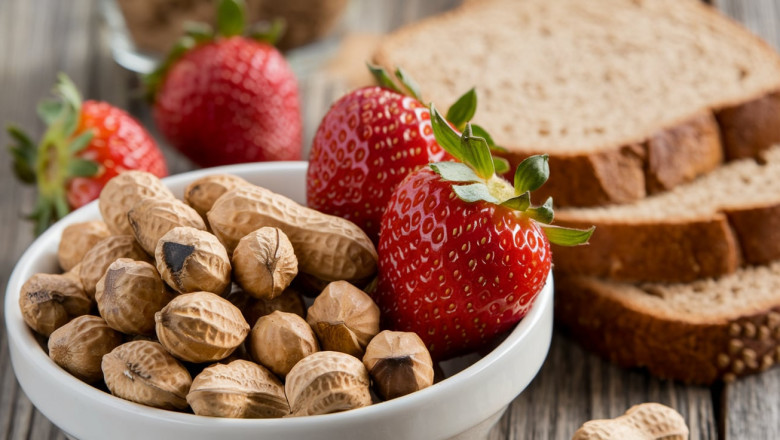views
Are Peanuts Low FODMAP? Everything You Need to Know
If you’re following a low FODMAP diet to manage symptoms of Irritable Bowel Syndrome (IBS) or other digestive sensitivities, you’re probably constantly checking food lists to see what’s safe. One question that often comes up: are peanuts low FODMAP? The short answer is yes — peanuts are considered low FODMAP in appropriate serving sizes. But, as with many foods, the details matter. In this article, we’ll break down everything you need to know about peanuts and how to enjoy them on a low FODMAP diet.
Understanding FODMAPs
Before diving into peanuts, let’s briefly review what FODMAPs are. FODMAP stands for Fermentable Oligosaccharides, Disaccharides, Monosaccharides, and Polyols. These are short-chain carbohydrates that can be poorly absorbed in the small intestine and fermented by bacteria in the gut, causing gas, bloating, pain, and other uncomfortable IBS symptoms.
A low-FODMAP diet involves eliminating high-FODMAP foods and slowly reintroducing them to find out what your body tolerates.
Are Peanuts Low FODMAP?
The good news for peanut lovers is that plain, dry-roasted or raw peanuts are low FODMAP in moderate servings. According to Monash University, which developed the low FODMAP diet and continues to test foods for FODMAP content, a serving of 32 grams (about two tablespoons or roughly a small handful) of plain peanuts is considered low FODMAP.
This makes peanuts a safe and satisfying snack for most people managing IBS, especially since they’re a great source of protein, healthy fats, and fiber. They also contain vitamins and minerals such as magnesium, folate, and vitamin E.
Watch Out for Additives
While plain peanuts are low FODMAP, not all peanut products are safe. Flavored peanuts may contain garlic, onion powder, honey, or other high-FODMAP ingredients. Candied or honey-roasted peanuts are also off-limits during the elimination phase of a low FODMAP diet.
Peanut butter can be low FODMAP too, as long as it’s free from added high-FODMAP ingredients. A serving size of 2 tablespoons (around 32 grams) of smooth or crunchy natural peanut butter is generally considered safe. Always check the ingredient list and look for brands with minimal ingredients: just peanuts and salt.
Peanuts vs. Other Nuts
Compared to other nuts, peanuts are an excellent low-FODMAP option. Many nuts, like cashews and pistachios, are high in oligosaccharides, making them problematic for people with IBS. Almonds, for example, are only low FODMAP in small amounts (around 10 nuts), but quickly become high FODMAP if you eat more.
Peanuts, being legumes, naturally contain different types of carbohydrates and are easier on the digestive system in moderate portions. This makes them a reliable and convenient source of plant-based protein.
How to Enjoy Peanuts on a Low FODMAP Diet
If you’re wondering how to incorporate peanuts into your low FODMAP meal plan, there are plenty of options:
-
As a snack: A small handful of dry-roasted peanuts makes a satisfying mid-afternoon snack.
-
In smoothies: Add a spoonful of natural peanut butter to a lactose-free yogurt smoothie with low-FODMAP fruits like blueberries or strawberries.
-
In cooking: Use peanut butter to make low-FODMAP peanut sauces for chicken or tofu dishes.
-
On oatmeal: Sprinkle a few crushed peanuts or swirl in some peanut butter for added flavor and crunch.
-
Baking: Use peanuts or peanut butter in low-FODMAP cookie and brownie recipes for richness and texture.
Caution: Portion Control Matters
Even though peanuts are low FODMAP in moderate amounts, larger servings can become problematic. Eating more than the recommended portion may result in excess fat intake, which can also trigger digestive discomfort, even if FODMAPs aren’t the cause.
Additionally, if you’re reintroducing foods or have multiple sensitivities, start with small portions and monitor your symptoms.
Conclusion
Peanuts are indeed low FODMAP in controlled portions and can be a fantastic addition to your diet if you’re managing IBS. They offer protein, fiber, and healthy fats while being satisfying and versatile. Just be sure to stick to plain peanuts or natural peanut butter without added ingredients, and always pay attention to portion sizes.
As always, if you’re following a low FODMAP diet, it’s wise to consult with a healthcare professional or a dietitian familiar with the diet to ensure you’re meeting your nutritional needs while managing symptoms.
I














Comments
0 comment